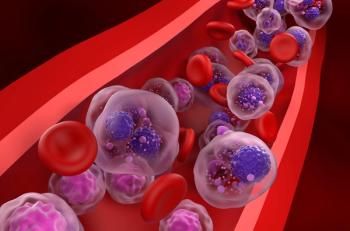
Pharmacy Practice in Focus: Oncology
- November 2020
- Volume 2
- Issue 5
Program Offering Enhanced Reimbursement for High-Quality Drugs Impacts Prescribing Patterns
Prescriptions for evidence-based cancer drugs increased under a pay-for-performance program without significantly impacting cost of care.
A new study has shown that pay-for-performance (P4P) programs may increase prescribing for certain cancer drugs but may not result in cost savings.1
The study, conducted by a research team at Penn Medicine in Philadelphia, Pennsylvania, examined a national P4P program and found that it offered enhanced reimbursements to oncology practices for prescribing high-quality, evidence-based cancer drugs, which increased the amount of prescriptions. However, the P4P program did not significantly change the total spending on care.2
According to the investigators, this is the first study to demonstrate how a national insurer’s voluntary P4P program could successfully change prescribing patterns among oncologists.2
Investigators analyzed insurance claims data for patients with cancer between 2014 and 2017, which showed that a payment of $350 per month per patient to oncology practices when oncologists prescribed evidence-based cancer drugs increased prescriptions of those drugs by 5.1%.2 The P4P program was associated with a $3339 differential (95% CI, $1121-$5557; P = .003) increase in cancer drug spending and $253 differential (95% CI, $100- $406; P = .001) increase in patient out-of-pocket spending. No significant changes in total health care spending ($2772; 95% CI, −$181-$5,725; P = .07) were observed over the 6-month episode period.1
Nearly 1900 oncologists were included in the study and more than 25,000 patients aged 18 years or older with breast, lung, or colorectal cancers in 14 states. Specifically, 62.2% of patients in the program received evidence-based drugs compared with 57.1% of patients who were not in the program.1,2 “We know that prescribing evidence-based cancer drugs is high-quality care and increases both the length and quality of life for patients with cancer,” said co-lead author Justin E. Bekelman, MD, in a prepared statement.2 “And yet, changing prescribing patterns have been and remains a big challenge. Based on what we found here, paying oncology practices to prescribe evidence-based drugs can serve as a valuable tactic to improve the quality of cancer care.”
Evidence-based cancer regimens have been shown to result in better outcomes, including longer survival and less toxicity, but not all patients receive these drugs. The investigators noted that P4P programs in health care have historically shown mixed results, but insurers have implemented these programs as a way to improve the quality of care and decrease cost growth.2
In oncology specifically, spending is largely driven by the high costs of cancer drugs and is expected to reach more than $170 billion in 2020. There are currently very few programs to improve care or reduce spending in this sector, according to the findings.2
A 3-year evaluation of Medicare’s Oncology Care Model program, for example, showed no significant impact on spending or utilization of emergency departments, hospitalizations, or cancer drugs. According to the investigators, the voluntary P4P Anthem Cancer Care Quality Program is the first and largest to show a significant increase in evidence-based prescriptions in cancer care.
In addition to increased prescriptions, the investigators found that overall spending did not significantly change, although the amount spent on oncologic drugs over a 6-month period increased from $48,030 to $51,369 and patient out-ofpocket expenses increased from $2217 to $2470. The investigators also found significant variability in cancer drug prescribing among oncology practices: Physicians prescribed 402 unique drug regimens, although just 60 of those were evidence-based regimens in the program.
According to the investigators, these findings highlight the need for more interventions.
“The cost of cancer care is too high, just like other areas in health care,” said senior author Amol S. Navathe, MD, PhD, in a prepared statement. “This program is a much-needed example of an effective program—one that improved quality of care for patients. As we look forward, we need to build on the success of this program to design programs that also decrease costs.”
REFERENCES
- Bekelman JE, Gupta A, Fishman E, et al. Association between a national insurer’s pay-for-performance program for oncology and changes in prescribing of evidence-based cancer drugs and spending. J Clin Oncol. Published online October 6, 2020. doi:10.1200/ JCO.20.00890
- Offering a pay-for-performance program to oncology practices increases prescriptions of evidence-based cancer drugs. News release. Penn Medicine. October 7, 2020. Accessed October 27, 2020. https://www.pennmedicine.org/news/news-releases/2020/october/ offering-pay-performance-program-oncology-practices-increases-prescrip-evidencebased-cancer-drugs
Articles in this issue
about 5 years ago
Essential Updates in Acute Graft-Versus-Host Diseaseabout 5 years ago
Cancer Care During the COVID-19 Pandemicabout 5 years ago
Spotlight on BTK Inhibitors in the Management of B-Cell Malignanciesabout 5 years ago
Bispecific Antibodies: The Next Generation of ImmunotherapyNewsletter
Stay informed on drug updates, treatment guidelines, and pharmacy practice trends—subscribe to Pharmacy Times for weekly clinical insights.






































































































































































































